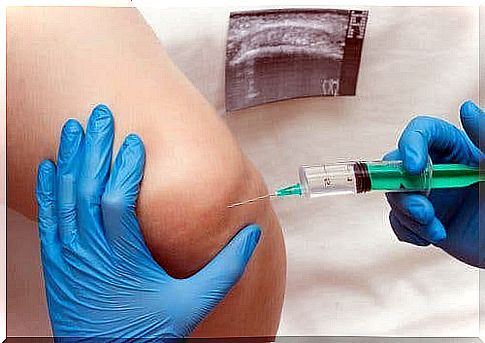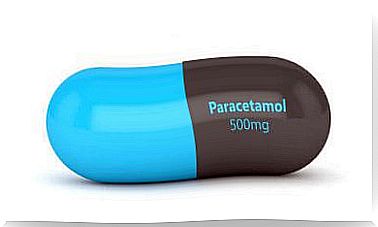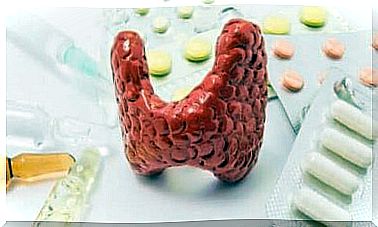Infiltration: What Is It And When To Do This Procedure?

The infiltration process involves injecting a drug or substance into a joint, nerve, wound, or other area to act directly on that region. It is a method that is currently expanding, as if used correctly, it allows to solve numerous pathologies or relieve certain very intense pains.
Its applications are many and the results are usually durable and effective. The main indication for infiltration is use on swollen joints. In these cases, anti-inflammatory substances and medications are injected to help reduce inflammation and stimulate tissue regeneration.
However, there are many people who believe this procedure is risky. However, it is a non-invasive technique that is often easier to handle than surgery or other procedures. So in this article we’ll tell you everything you need to know about infiltration.
What is an infiltration?
As already mentioned, infiltrations are injections of substances into an injured area, be it a nerve, a specific joint, or a soft part such as a tendon or muscle.
The substance injected depends on the condition you want to treat. For example, in the case of joint damage, collagen or hyaluronic acid is often infiltrated, which appears to stimulate tissue recovery.
When it comes to inflammation , anti-inflammatory drugs such as corticosteroids are administered. Growth factors or anesthetics may also be applied.
The idea is that the drug, when going straight to the injured area, allows a faster , more effective and lasting result to be obtained. By not having to be administered orally or intramuscularly, numerous systemic side effects are avoided.

What is infiltration used for?
When it comes to a joint, the infiltration is usually done when the person takes medication that has not been able to provide any improvement for a long time. They are also used when the pain is very severe. The most widespread uses are for tendonitis and bursitis.
Tendinitis is a tendon lesion in which inflammation and irritation predominate. They are very common, painful and disabling. They usually occur on the knee, heel or shoulder.
Bursitis is a condition in which there is inflammation of this sac that protects the joints and dampens the shock between the bones. It tends to appear when a joint, such as the knee, is used heavily.
Epidural infiltration
In addition to the joints, infiltrations can be performed in the spine. This is done in the epidural space where there is an inflamed nerve root.
When a nerve root is compressed by a spinal problem, it can cause radiating pain. This means that the person suffering from it feels pain in remote areas that are not injured, such as a leg.
This type of infiltration allows for a significant reduction in this pain. A disease in which it is usually applied is sciatica, when the usual treatments fail to provide relief to the patient.
How are they made?

It is important to note that infiltration should not be the first treatment option for an injury. On the contrary, ideally, it should be used when the patient does not respond to conventional treatment or the pain does not decrease, as mentioned above.
First, the area where the infiltration is to be carried out must be disinfected. Betadine and alcohol are often used for this purpose. In addition, the ideal is to apply a topical anesthetic, which allows you to inject the needle without pain.
The needle is then injected into the area. Usually, when the site to infiltrate is not so shallow, the doctor is usually guided by techniques such as ultrasound to guide himself properly. Once this is done, the drug is then slowly infiltrated so that it is evenly distributed in the lesion.
Conclusion
Infiltration is a relatively simple procedure that allows the treatment of numerous very painful and disabling pathologies, such as tendonitis or compression of a nerve root.
However, it is the doctor who should indicate the most appropriate treatment for each person. Therefore, do not hesitate to consult your doctor and, if he chooses this procedure, keep in mind that about 48 hours of rest is recommended after the intervention.








